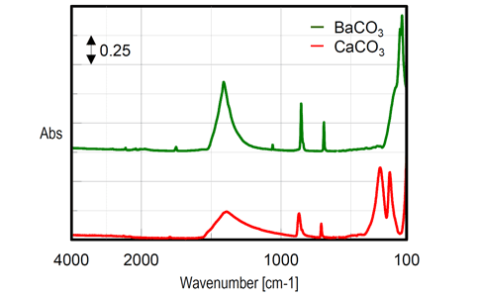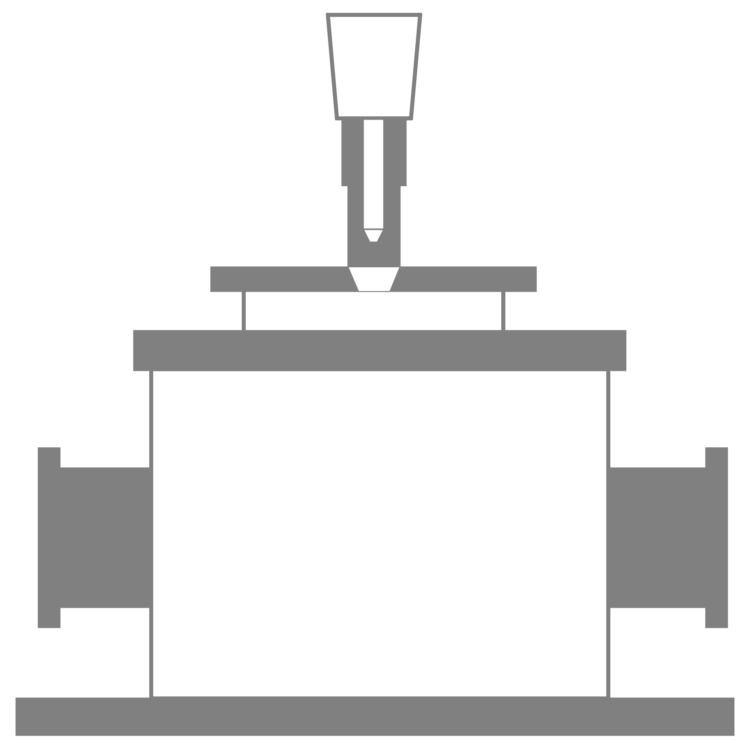Overview of ATR PRO ONE
ATR PRO ONE is an accessory of the infrared spectrophotometer with the flexibility of the type that can be installed directly in the sample chamber of the infrared spectrophotometer.
It is equipped with a mechanism that automatically recognizes accessories and a mechanism that sends purge gas from the FTIR main unit (smart purge mechanism) into the ATR optical system.
Since it can be easily switched with other accessories, the range of measurement is greatly expanded.
Prism Selection
ATR PRO ONE has also made great progress with regard to the prism, which is a major factor that determines the performance of ATR.
The light collection mechanism by ZnSe and KRS-5 is omitted, and monosilic (single crystal) diamond is adopted.
This has realized high-throughput measurement with reduced light loss.
We have three types of prisms diamond, Ge, and ZnSE.
A high-throughput type that uses an AR coat and a wide-range measurement type that supports a wide wave number range up to 30 cm -1 .

| Material | Features |
|---|---|
| ZnSe | The corresponding wave number range is 15000-550 cm -1 , and it is used for measuring general organic substances and aqueous solutions. However, it is easier to break than diamond and dissolves in nitric acid. |
| Ge | The corresponding wavenumber range is 5200-550 cm -1 , which is used for high refractive index samples, surface measurements, and strong absorption samples. However, it is more fragile than diamond and dissolves in hot sulfuric acid. |
| Diamond | The corresponding wave number range is 10000-2500, 1800-300cm -1 (wide range type can be up to 30 -1 ), boasts high mechanical strength, and is acid resistant. Therefore, it is possible to measure acids, solvents, oxidation catalysts, etc. |
Pressure Reproducibility
In ATR, after the sample is placed on the stage, the sample is pressed from above with a tip so that it is in close contact with the prism.
The torque limiter gives reproducibility to the pressing force and provides more accurate measurement.

ATR PRO ONE Accessories
Considering the relationship between the tip that holds down the sample (pressure tip) and the sample, we have lined up several types of heads.

It is the most suitable head that pursues the relationship with samples in various states such as powder, elasticity, or solution.
| Head Type | Features |
|---|---|
| Flexible Head (Metal) | The tip is a stainless steel head. Since the tip is flexible, it is also effective for some hard samples that do not have the shape of a flat plate. It is also useful for measuring samples that are smaller than prisms. |
| Flexible Head (Resin) | The tip is a resin head. Since the tip is flexible, it is also effective for some hard samples that do not have the shape of a flat plate. |
| Flat Head | The tip is a stainless steel head. The flat tip makes it effective for elastic samples. |
| Concave Head | The tip is a stainless steel head. The tip is conical and recessed, which is useful for particulate samples. |
In addition, we also offer a taper guide and a volatility prevention cover that can be used for covering the prism.
The taper guide is shaped like a mortar toward the center of the prism, allowing the sample on the powder to be efficiently placed on the measurement site.
The anti-volatility cover reduces the volatility of the sample during measurement.
ATR Correction
This is very important, but the permeation method and the ATR method differ in the peak intensity and peak position of the obtained sample spectrum.
This difference occurs due to the wavenumber-dependent difference in the depth of penetration into the sample and the anomalous dispersion of the refractive index.
Therefore, it is a cause of lowering the hit rate when searching the measurement sample in the database.

In the ATR method, corrections are generally made to the measured spectrum in order to be consistent with the transmission method.
JASCO can measure without being aware of the difference in measurement method by incorporating a new method called refractive index anomalous dispersion correction into the conventional correction.



